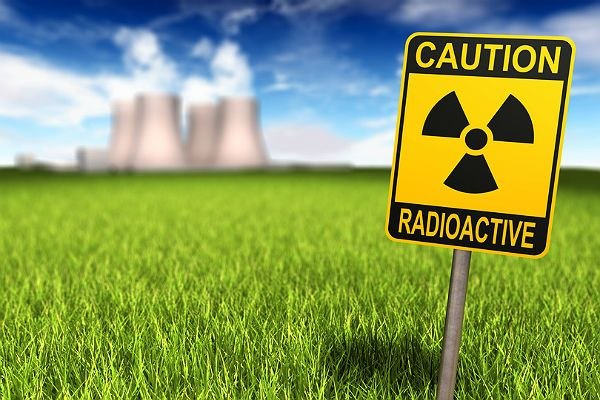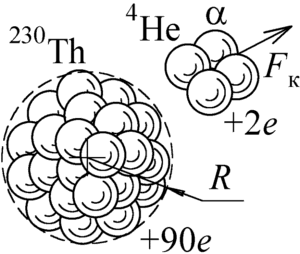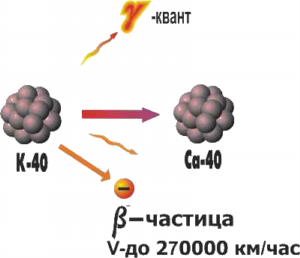Caution, radiation!
Adore old photographic equipment? Appreciate the old rare glass giving a beautiful picture? Prefer time-tested glass and iron lenses? Take a look at the list at the end of the article. If you have one of these, you are doomed.

It all started with a comment on a review of a photo lens that contains thorium oxide in its lenses:
- This lens has a radiation background! Somehow I was going to purchase this thing, but very competent and responsible (I bought more than one lens from him), the seller did not advise me precisely because of the background.
Just do not rush to swallow the taren without reading to the end.
 Probably, if they were still being produced, the phrase “LENS MAY BE THE CAUSE OF CANCER DISEASES” to meet modern standards would be an integral attribute of his advertising.
Probably, if they were still being produced, the phrase “LENS MAY BE THE CAUSE OF CANCER DISEASES” to meet modern standards would be an integral attribute of his advertising.
The assertion that some photo lenses have ionizing radiation is generally true, and you can verify this with a device for measuring the power of such radiation.
Here is a good visual example:
Really, radioactive. There is a piece of thorium in the glass. The usual such radioactive thorium . It literally breaks into pieces , which at a breakneck speed fly into your face while you view the model in the viewfinder.

With a monstrous speed - tens of thousands of kilometers per second. Do you even know how they affect the cells of living organisms?
Use the lens as intended. Install on camera and take pictures. Alpha particles are heavy, do not fly far and quickly lose energy. Not only will they get bogged down in a centimeter of air, but they won’t even pierce the surface layer of the skin. Danger arises only when ingested. You won’t eat it, right? Although even in this case, radiation does not threaten you. Cut yourself with debris, and death from bleeding will occur before a sufficient dose of radiation is distributed in the body so that its organs are affected by radiation sickness.
Depends on the ultimate goals. If you are looking for a lens that can be attached with a rear lens to the body of a living creature for a long time - I would advise you to choose another model.
 Of course not. Even the natural foods that you eat in some quantities also contain radioactive isotopes. For example, an ordinary medium-sized banana contains as much Potassium-40 as there is in this lens of yours. You think that there is another kind of decay. This is RADIATION .
Of course not. Even the natural foods that you eat in some quantities also contain radioactive isotopes. For example, an ordinary medium-sized banana contains as much Potassium-40 as there is in this lens of yours. You think that there is another kind of decay. This is RADIATION .
There are many articles on radiation that surrounds us in everyday life. Sources can be not only glass with thorium, but also various other products: watches, household appliances, cars, and even toys made for children made from recycled products.
The previous version of the article can be found here .

It all started with a comment on a review of a photo lens that contains thorium oxide in its lenses:
- This lens has a radiation background! Somehow I was going to purchase this thing, but very competent and responsible (I bought more than one lens from him), the seller did not advise me precisely because of the background.
Just do not rush to swallow the taren without reading to the end.
Everything is relative.
 Probably, if they were still being produced, the phrase “LENS MAY BE THE CAUSE OF CANCER DISEASES” to meet modern standards would be an integral attribute of his advertising.
Probably, if they were still being produced, the phrase “LENS MAY BE THE CAUSE OF CANCER DISEASES” to meet modern standards would be an integral attribute of his advertising. The assertion that some photo lenses have ionizing radiation is generally true, and you can verify this with a device for measuring the power of such radiation.
Here is a good visual example:
Pentax 50mm f / 1.4 SMC Takumar
Come on?
Really, radioactive. There is a piece of thorium in the glass. The usual such radioactive thorium . It literally breaks into pieces , which at a breakneck speed fly into your face while you view the model in the viewfinder.

With a monstrous speed - tens of thousands of kilometers per second. Do you even know how they affect the cells of living organisms?
And it would seem, what does the wild ghouls-tramps have to do with it?

And what to do?
Use the lens as intended. Install on camera and take pictures. Alpha particles are heavy, do not fly far and quickly lose energy. Not only will they get bogged down in a centimeter of air, but they won’t even pierce the surface layer of the skin. Danger arises only when ingested. You won’t eat it, right? Although even in this case, radiation does not threaten you. Cut yourself with debris, and death from bleeding will occur before a sufficient dose of radiation is distributed in the body so that its organs are affected by radiation sickness.
But what about the danger?
Depends on the ultimate goals. If you are looking for a lens that can be attached with a rear lens to the body of a living creature for a long time - I would advise you to choose another model.
Can I take off my protective suit?
 Of course not. Even the natural foods that you eat in some quantities also contain radioactive isotopes. For example, an ordinary medium-sized banana contains as much Potassium-40 as there is in this lens of yours. You think that there is another kind of decay. This is RADIATION .
Of course not. Even the natural foods that you eat in some quantities also contain radioactive isotopes. For example, an ordinary medium-sized banana contains as much Potassium-40 as there is in this lens of yours. You think that there is another kind of decay. This is RADIATION . There are many articles on radiation that surrounds us in everyday life. Sources can be not only glass with thorium, but also various other products: watches, household appliances, cars, and even toys made for children made from recycled products.
The previous version of the article can be found here .
PS: List of lenses with a radiation background
Taken from camerapedia.wikia.com/wiki/Radioactive_lenses :
Canon FL 58mm f / 1.2
Canon FL 50mm f / 1.8
Canon FD 17mm f / 4
Canon FD 35mm f / 2.0 (versions from the early 1970's)
Canon FD 55mm f / 1.2 SSC Aspherical (Measured at 46532 CPM @ front element)
Carl Zeiss Jena Pancolar 55mm f1.4 (measured at 2360 nSv / h)
Carl Zeiss Jena Pancolar 50mm f1.8 "Zebra"
Carl Zeiss Jena Biometar 80mm f2.8 "Zebra" "( Only P6 mount version)
Carl Zeiss Jena Flektogon 50mm f4 "Zebra" "(Only P6 mount version)
Focal (Kmart store brand) 35mm f / 2.8
Fujica Fujinon 50mm f / 1.4 non-EBC (Measured at 35137 CPM @ back element)
Fujica Fujinon 50mm f / 1.4 EBC
GAF Anscomatic 38mm f / 2.8 (GAF Anscomatic 726 camera)
Industar 61 L / Z MC (L is for Lanthanum - radioactive element)
Kodak Aero-Ektars (various models)
Kodak Ektanon 4-inch Projection Lens f / 3.5
Nikkor 35mm f / 1.4 (early variant with thorium glass elements)
Olympus Zuiko Auto-S 1: 1.2 / 55 mm (first version with thorium glass elements)
Olympus Zuiko Auto-S 1: 1.4 / 50 mm (only first version "Silvernose" is Radioactive)
Pentax Super Takumar 35mm f / 2 (Asahi Optical Co.)
Pentax Super Takumar 50mm f / 1.4 (Asahi Optical Co.)
SMC Takumar 35mm f / 2.0 (Asahi Optical Co.)
Super Takumar 35mm f / 2.0 (Asahi Optical Co .)
SMC Takumar 50mm f / 1.4 (Asahi Optical Co.)
Super Takumar 50mm f / 1.4 (Only latest Version 2)
Super Takumar 55mm f / 1.8 (Asahi Optical Co.)
SMC Takumar 55mm f / 1.8 (Asahi Optical Co.)
Super Takumar 55mm f / 2.0 (Asahi Optical Co.)
SMC Takumar 55mm f / 2.0 (Asahi Optical Co.)
SMC Takumar 85mm f / 1.8 (Asahi Optical Co.)
Super Takumar 6x7 105mm f2.4 (Asahi Optical Co.)
Steinheil Auto-Quinon 55mm f / 1.9 KE mount
Topcor RE GN 50 / 1.4 (Lanthanum glass)
Topcor UV 50mm f / 2
Yashinon-DS 50mm f1.4 (Yashica) (Measured at 680 nSv / h)
Yashinon-DS 50mm f1.7 (Yashica) (Measured at 762 nSv / h)
Yashinon-DX 50mm f / 1.4 (Yashica) (Measured at 1359 nSv / h)
Yashinon-DS-M 50mm f / 1.4 (Yashica) (Measured at 572 nSv / h)
Yashinon-DS-M 50mm f / 1.7 (Yashica) (Measured at 798 nSv / h)
Yashinon-DS-M 55mm f / 1.2 (Yashica) (Measured at 1056 nSv / h)
Yashinon 55mm f1.2 (Tomioka) (Measured at 981 nSv / h)
Leitz Wetzlar Summicron 5cm f2 (M39)
Vivitar Series 1 28mm f1.9
Voigtlander 50mm Nokton Prominent
Zenitar-M 50mm f1.7 (Lanthanum glass)
Canon FL 58mm f / 1.2
Canon FL 50mm f / 1.8
Canon FD 17mm f / 4
Canon FD 35mm f / 2.0 (versions from the early 1970's)
Canon FD 55mm f / 1.2 SSC Aspherical (Measured at 46532 CPM @ front element)
Carl Zeiss Jena Pancolar 55mm f1.4 (measured at 2360 nSv / h)
Carl Zeiss Jena Pancolar 50mm f1.8 "Zebra"
Carl Zeiss Jena Biometar 80mm f2.8 "Zebra" "( Only P6 mount version)
Carl Zeiss Jena Flektogon 50mm f4 "Zebra" "(Only P6 mount version)
Focal (Kmart store brand) 35mm f / 2.8
Fujica Fujinon 50mm f / 1.4 non-EBC (Measured at 35137 CPM @ back element)
Fujica Fujinon 50mm f / 1.4 EBC
GAF Anscomatic 38mm f / 2.8 (GAF Anscomatic 726 camera)
Industar 61 L / Z MC (L is for Lanthanum - radioactive element)
Kodak Aero-Ektars (various models)
Kodak Ektanon 4-inch Projection Lens f / 3.5
Nikkor 35mm f / 1.4 (early variant with thorium glass elements)
Olympus Zuiko Auto-S 1: 1.2 / 55 mm (first version with thorium glass elements)
Olympus Zuiko Auto-S 1: 1.4 / 50 mm (only first version "Silvernose" is Radioactive)
Pentax Super Takumar 35mm f / 2 (Asahi Optical Co.)
Pentax Super Takumar 50mm f / 1.4 (Asahi Optical Co.)
SMC Takumar 35mm f / 2.0 (Asahi Optical Co.)
Super Takumar 35mm f / 2.0 (Asahi Optical Co .)
SMC Takumar 50mm f / 1.4 (Asahi Optical Co.)
Super Takumar 50mm f / 1.4 (Only latest Version 2)
Super Takumar 55mm f / 1.8 (Asahi Optical Co.)
SMC Takumar 55mm f / 1.8 (Asahi Optical Co.)
Super Takumar 55mm f / 2.0 (Asahi Optical Co.)
SMC Takumar 55mm f / 2.0 (Asahi Optical Co.)
SMC Takumar 85mm f / 1.8 (Asahi Optical Co.)
Super Takumar 6x7 105mm f2.4 (Asahi Optical Co.)
Steinheil Auto-Quinon 55mm f / 1.9 KE mount
Topcor RE GN 50 / 1.4 (Lanthanum glass)
Topcor UV 50mm f / 2
Yashinon-DS 50mm f1.4 (Yashica) (Measured at 680 nSv / h)
Yashinon-DS 50mm f1.7 (Yashica) (Measured at 762 nSv / h)
Yashinon-DX 50mm f / 1.4 (Yashica) (Measured at 1359 nSv / h)
Yashinon-DS-M 50mm f / 1.4 (Yashica) (Measured at 572 nSv / h)
Yashinon-DS-M 50mm f / 1.7 (Yashica) (Measured at 798 nSv / h)
Yashinon-DS-M 55mm f / 1.2 (Yashica) (Measured at 1056 nSv / h)
Yashinon 55mm f1.2 (Tomioka) (Measured at 981 nSv / h)
Leitz Wetzlar Summicron 5cm f2 (M39)
Vivitar Series 1 28mm f1.9
Voigtlander 50mm Nokton Prominent
Zenitar-M 50mm f1.7 (Lanthanum glass)
A few more experiments with lenses
Interesting articles on the topic and not onlyThe allowance for citizens "Caution! Radiation ”
